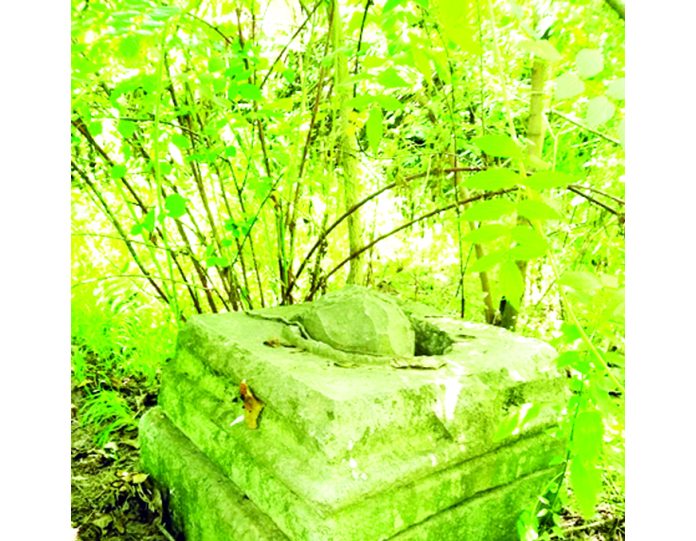Robin Koul
The land of Uma Bagwati and mystics: Kashmir is known for her Saints, Rishis, legends and deities.
Till date whenever I hear my father swear for anything by heart he will say “Jougpadsh henze drei” Since my childhood I grew up hearing that. Even when my father constructed a house, on the marble plaque he engraved “Om Jugipadshai Nama”. Sometimes I used to ask him who this Jougpadsha is. He just says, “He is our protector and always be in his sharan”. I was unfortunate that I was forced to live far away from his realm but felt fortunate, not away from his blessings.
It is the history of our legend, the legend of our fathers and forefathers who were there since eternity to protect us and protect our belief. It is the story of Jougpadsha, Jogipadsha or Jogi Badsha who manifested behind our house in our ancestral village Nunar in Ganderbal district of Kashmir.
Construction: It is around two square feet, square shaped rock base having an ancient Shivlingh in the centre. The whole block is built by two layers of stone. Upper block consists of the lingam and the lower block provides the base for the upper portion. Same formations of Shivling’s are found in ancient Naranag Temples which are not far away from our village.
Rituals: The place where he manifested was called JuigKain. Navrehy Navam is celebrated as the birthday of the legend. On the day of Ramnavami, people of our village used to set up a community kitchen outside. They would prepare kheer in the cauldrons and offer the bogh to Jogipadsha first. We used to keep a bogh every time for him in every kind of ritual performed at home. Even in Shiv Ratri a portion of naveed is kept for him separately. Even after migration our families prepare kheer and yellow rice on his birthday.
Legends: While talking to my elders they informed me that Jogipoadsha never wanted and allowed for the construction of any kind of roof or structure over him. Once people of the village started the construction of a temple but he appeared in the dream of my father’s grandmother and asked to stop constructing anything above him. He said he was a Jogi and likes to keep moving. Also, some elders have observed his slow and gradual movement from his place.
In the summers, as said by my father who says he is the eyewitness of a snake coming out from the Shivling, his grandmother used to offer milk to that Naga. He used to tour around our neighbourhood and return back to his place without harming anyone.
People believe in him that much, whenever anyone used to feel sick at home, some soil would be brought from around the Shivling and would be smeared on the forehead to get cured. Villagers also used to get the grutt meyz (soil) from his place to make Partheshwaras.
He is said to be moving. He came and settled to the present place back from the mountains. Some say he came from Gangabal Mount Harmukh; the abode of Lord Shiva. My aunt says he is the Shiva in the version of a young lad, having long jataen (dreadlocks) as she had seen him in her dream. One of my father’s uncle’s Sh. Laxhman Koul said that once a Muslim person constructed a temporary settlement near the Jogipadsha. In the nights he used to hear the sound of damru and chimta. He got scared and finally he left the place and settled somewhere else. Swami Nand Lalji (Nand Bab) the iconic saint of Nuner village also used to come and meditate near the Jogipadsha. Local Muslim community also reveres Jogipadsha in high esteem. Locals who are aware of his grandeur always pay their obeisance while passing through his area. Padsha Kol the village canal which passes through most of the area and provides water to the whole village, got its name from the legendary Jogipadsha. Also there is an herb found in high altitude mountains of Kashmir known as Joug Padsha (Phen Kamal / Saussurea Simpsoniana). This herb is used in various medicines in Ayurveda and Tibetan medicinal practices.
Wrapping up: The present condition of the Shivling is heartbreaking. It has been roughly removed from its original place and thrown away in a secluded corner outside a newly constructed house. Last time I went there, I kept searching for that in the whole area. Later a lady passing by suggested to look for the asthan over the soil mound outside the periphery of that house. The Shivling is brutally mutilated, but it has not lost the spirit of its hope that his believers one day will come to place him back in the effulgence of his past glory. And it is my dream to be a part of that. Om Sri Jogipadshai Nama! Jai Nunar! Jai Kashmira!


